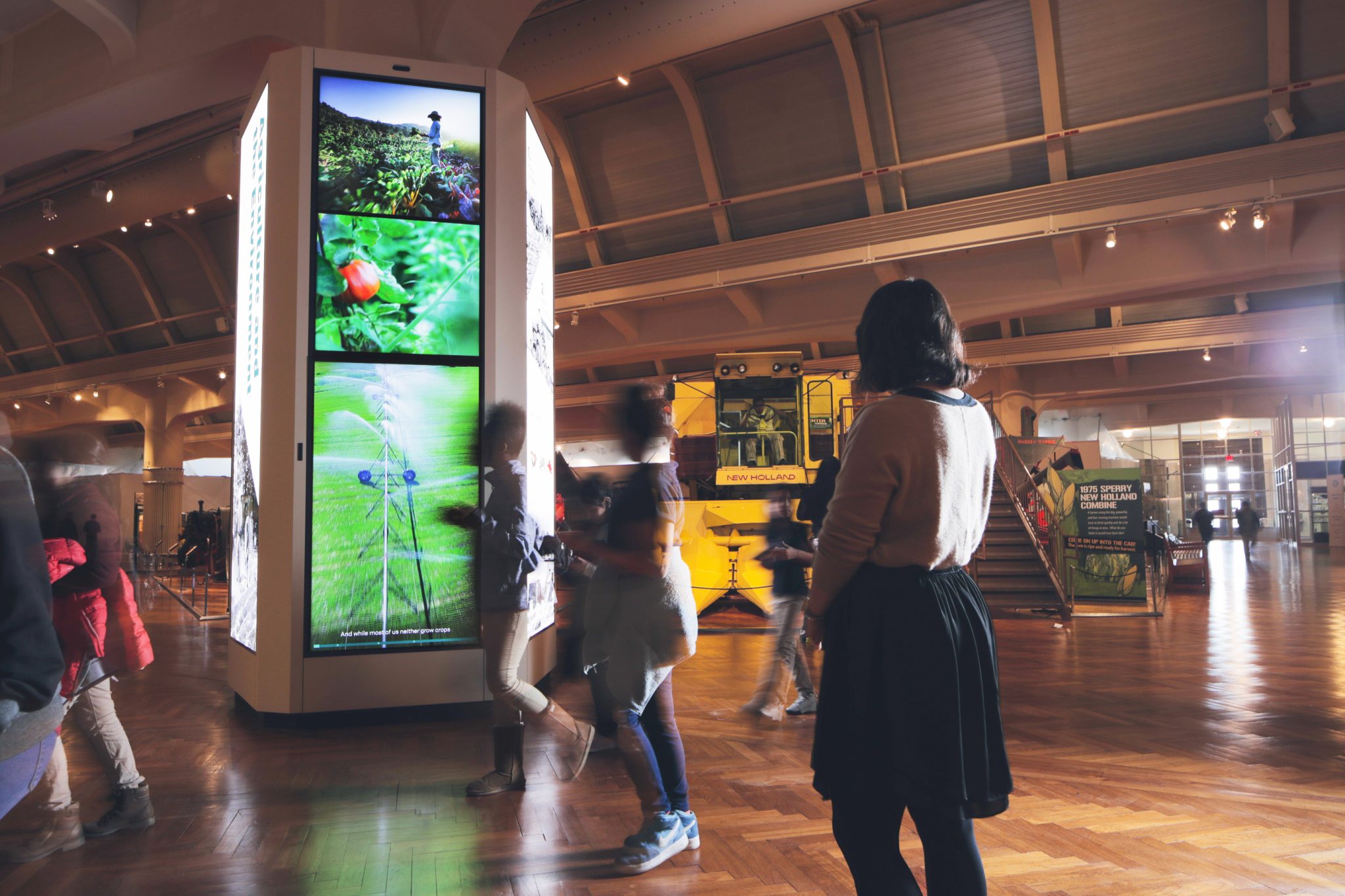Artificial intelligence (AI) is everywhere – from social media filters to workplace efficiency. But now, it’s time for museums to embrace the power of AI to create more engaging and personalized experiences for visitors. Today’s digital natives and Gen Z visitors expect a higher level of interactivity and personalization, and incorporating AI into museum exhibits can enrich their experiences and help museums stay relevant in a rapidly evolving digital landscape.
Artificial intelligence (AI)
and the Modern Museum

Connecting Collections
Museums are renowned for their vast and varied collections of objects and artifacts, spanning cultures, eras, and genres. Now, artificial intelligence (AI) is being employed to analyze these collections, identifying patterns and themes, and automating categorization. By drawing connections between seemingly disparate areas, visitors are able to gain a greater appreciation for the museum’s overarching mission and brand.
At the Henry Ford, the Connections Table, offers a blend of curator-driven concepts and AI-discovered connections has resulted in a playful touchtable, where visitors can explore a web of interconnected objects, gaining insight into the spirit of innovation that runs through the museum.
NASM Wall
Creative Collaboration
Visitors sometimes feel hesitant to participate in public creative activities, unsure of where to start. AI can help visitors unleash their creativity by offering suggestions and building on their ideas.
MIT Museum’s Interactive Poetry exhibit uses AI to inspire visitor creativity. Collaborating with a neural network, visitors write a line of poetry, and the AI adds to it. The result is a collaborative poem that visitors can contribute to and send to the river of poems displayed on the overhead screens. The AI moderates user input, ensuring a safe and creative environment.
Collaborative Poetry
Using AI to Understand AI
Museums are no longer just about showcasing art and artifacts; they’re also becoming a space for learning about cutting-edge technology. As AI continues to play an increasingly critical role in our lives, museums are leveraging this opportunity to educate visitors about its inner workings.
At the MIT Museum, the Black Box Interactive exhibit does just that. Using a touchscreen, visitors can draw a face and watch as a neural network analyzes the emotions portrayed. The AI’s processes are then visualized in real-time using a holographic projection, allowing visitors to gain a better understanding of how AI works. By interacting with AI in a fun and engaging way, visitors can become more comfortable with the technology and appreciate its potential impact on our lives.
Black Box
Exhibits that See and Understand
At The Henry Ford museum, AI is revolutionizing the way visitors interact with exhibits. Using advanced camera algorithms, the technology can differentiate people from objects, allowing for dynamic responses to visitor presence or gestures. The four visitor-sensing digital pillars respond to guest behavior, revealing layered information about the museum’s artifacts and activating the entrance. This innovative approach to museum technology is helping to create an immersive and engaging experience for visitors.
NASM Wall
AI Assisted Accessibility
One of the most exciting developments in AI are capabilities that can analyze visual information beyond basic image recognition. For visitors with low vision, AI can thoroughly describe an object, providing context and identifying attributes that connect objects or make them unique.
AI might also help visitors with low vision navigate your museum. The company Be My Eyes has already helped a user navigate safely through railway system with point-by-point instructions that identify tripping hazards and suggest safer routes.
AI and Spatial Analytics
AI and camera vision can be used to provide valuable insights on how people interact in physical spaces. By analyzing data such as foot traffic, social distancing, and areas of high activity, businesses can make informed decisions about their physical layouts, optimizing for efficiency and safety. Additionally, this technology can assist with crowd management, security, and resource allocation.
An art museum may want to understand how visitors engage with its exhibits to optimize the visitor experience. By deploying cameras with AI and computer vision capabilities, the system can track which exhibits receive the most attention, how long visitors spend at each exhibit, and which paths they take through the museum. This data can help the museum understand visitor interests and preferences, allowing them to curate future exhibitions to better match their visitors’ tastes. Additionally, this technology can assist with crowd management and security, ensuring visitors have a safe and enjoyable experience.
AI is Just Getting Started
There are an infinite number of ways that AI can build on your deep curatorial and institutional knowledge to enhance the visitor experience. It’s one of many creative tools we employ to help connect ideas, add playful creativity, and enhance accessibility. By meeting visitors’ unique interests and abilities, AI can provide a more enriching and satisfying museum experience.




